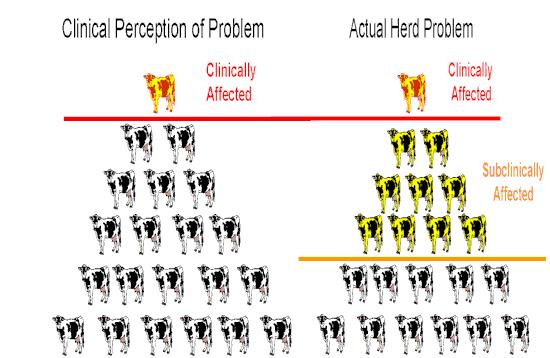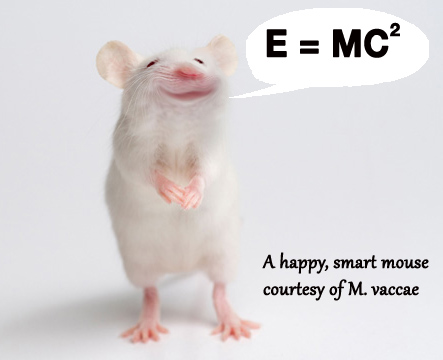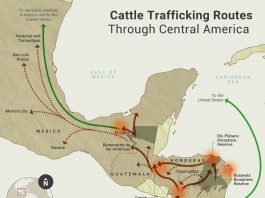
Read about spring pasture bloat prevention and cures here.
This article comes to us from Ron Lemenager1, Allen Bridges1, Matt Claeys1, and Keith Johnson2 Purdue University Departments of Animal Sciences1 and Agronomy2
Most cattlemen look forward to warmer temperatures and spring grass. As temperatures begin to warm, cool-season grasses and legumes begin a rapid growth phase resulting in the production of large amounts of lush, palatable, green pasture. Unfortunately, early in the growing season, these forages are very high in moisture content and nutrients are diluted. The result is that it is difficult for animals to eat enough dry matter to meet all of their nutrient requirements. Two unrelated, but equally important problems are commonly seen early in the grazing season – grass tetany and pasture bloat. We’ll cover grass tetany this week and pasture bloat next week.
Grass Tetany
Grass tetany, sometimes called grass staggers or hypomagnesaemia, is a metabolic disorder of cattle related to a deficiency of magnesium (Mg). Early lactation cows are the most susceptible, with older cows considered more susceptible than those with their first or second calves. The logic is that older cows seem less capable of mobilizing Mg reserves from the bones than their younger counterparts.

Grass tetany usually occurs when animals are grazing lush pastures in the spring, but it can occur during the fall and winter as well. Grass tetany is typically seen in early lactation cows grazing cool-season grasses during cool, cloudy and rainy weather and often occurs when cool weather is followed by a warm period. Rapidly growing, lush grasses create the greatest problem. Grass tetany has occurred on orchardgrass, perennial ryegrass, timothy, tall fescue, crested wheatgrass, bromegrass, Kentucky bluegrass, annual ryegrass and small grain (wheat, oats, barley, triticale and rye) pastures. It can also occurs when livestock are wintered on low Mg grass hay or corn stover. Fortunately, the risk of grass tetany decreases on pastures that contain over 30% legumes (examples: clovers, alfalfa, birdsfoot trefoil) or animals wintered on grass-legume hay.
The greatest risk for grass tetany is when pastures soils are low in available magnesium, high in available potassium and high in nitrogen. Pastures where a significant amount of manure has been applied often have this mineral imbalance and are considered more vulnerable. Soil testing is a valuable tool to provide insight into potential problems. High rates of nitrogen and potassium fertilizer are sometimes associated with increased tetany problems. Suspect forages should be analyzed. Forage containing less than 0.2 percent magnesium, more than 3 percent potassium and more than 4 percent nitrogen (25 percent crude protein) are likely candidates to create grass tetany problems. Some data suggest that low phosphorus levels can also contribute to increased grass tetany on these types of pastures. If a soil test indicates low soil Mg and low soil pH, a Mg containing limestone would be recommended to improve soil Mg and pH levels.
 Unfortunately in many cases of grass tetany, symptoms are not noted and the only evidence is a dead cow. In mild cases, milk yield is decreased, and the animal is nervous. These signs indicate the need for preventive measures. Animals affected by acute grass tetany may suddenly stop grazing, appear uncomfortable, and show unusual signs of alertness, such as staring and keeping their heads and ears in an erect position. Cows may also stagger, have twitching skin (especially on the face, ears, and flanks), and lie down and get up frequently. Once cows get to this point, they are easily excited and any stimulation may lead to startling reactions, such as continuous bellowing or running. A staggered gait pattern typically develops followed by collapse, stiffening of muscles and violent jerking convulsions with the head pulled back. Animals often lie flat on one side with periodic foreleg paddling, twitching of the eyes and ears, and a chewing motion that produces froth around the mouth. Between convulsions, the animal may appear relaxed. During this phase, any sound or touching of the animal, such as when administering treatment, may result in violent reactions. Animals usually die during or after a convulsion unless treatment is given.
Unfortunately in many cases of grass tetany, symptoms are not noted and the only evidence is a dead cow. In mild cases, milk yield is decreased, and the animal is nervous. These signs indicate the need for preventive measures. Animals affected by acute grass tetany may suddenly stop grazing, appear uncomfortable, and show unusual signs of alertness, such as staring and keeping their heads and ears in an erect position. Cows may also stagger, have twitching skin (especially on the face, ears, and flanks), and lie down and get up frequently. Once cows get to this point, they are easily excited and any stimulation may lead to startling reactions, such as continuous bellowing or running. A staggered gait pattern typically develops followed by collapse, stiffening of muscles and violent jerking convulsions with the head pulled back. Animals often lie flat on one side with periodic foreleg paddling, twitching of the eyes and ears, and a chewing motion that produces froth around the mouth. Between convulsions, the animal may appear relaxed. During this phase, any sound or touching of the animal, such as when administering treatment, may result in violent reactions. Animals usually die during or after a convulsion unless treatment is given.

To prevent grass tetany, animals should be fed a high Mg supplement or free-choice mineral (containing 8 to 12 percent Mg.) Magnesium may be added to a protein supplement, grain mix, silage or liquid supplement. The cow’s Mg requirement for maintenance and lactation typically would be from 13 to 15 grams per day, but can be as high as 36 mg in unique situations. Magnesium oxide is the primary source of Mg in mineral supplements and it is unpalatable which results in low mineral intake. For this reason, something needs to be added to the mineral mix to increase palatability such as corn, soybean meal, or molasses. Magnesium sulfate is also a good source and is more palatable. If producers are feeding corn co-products (distiller’s grains or corn gluten feed), adding additional sulfur to the diet in the form of magnesium sulfate could create a sulfur toxity. The best recommendation is to feed a more moderate amount of Mg on an ongoing basis (include 2.5 to 3.5 percent Mg) as a preventative. This is especially important in herds having a higher percentage of older cows.
Treatment of cows in the early stages of grass tetany can be effective, but animals should be handled quietly and gently, producing the least stress and exertion possible. Any stress that causes excitement such as driving or roping can result in sudden death. A sterile solution of magnesium sulfate given subcutaneously is a common treatment and producers that have experienced grass tetany should contact their herd health veterinarian. Other treatments used by some veterinarians include intravenous injections of chloral hydrate or Mg sulfate to calm excited animals and then follow with a calcium-magnesium gluconate solution. Intravenous injections should only be administered slowly by a trained person, because there is danger of heart failure if they are given too rapidly. As a follow-up treatment, the animal should be removed from the tetany-producing pasture and fed hay and concentrates. Also, approximately 30 grams of Mg sulfate should be given daily. Cows that have grass tetany are more likely to get it again later in the season or in future years.
Next in this two-art series, another pasture danger: bloat.



